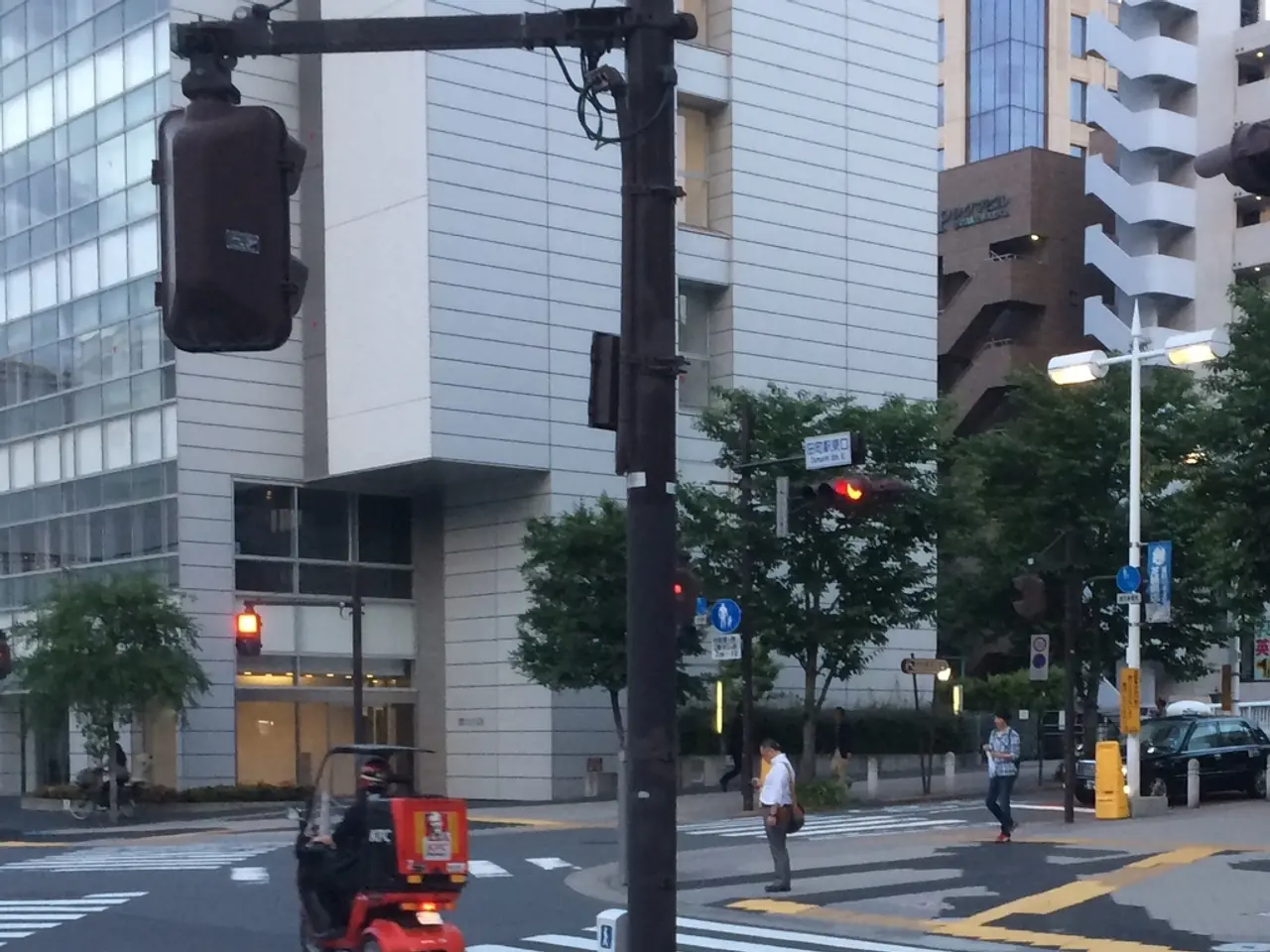Road safety necessitates behavioral modifications and legal reforms, according to Pradeep S. Mehta.
In India, over-speeding accounts for an alarming 67.3% of all road accident deaths and 71.2% of total crashes, highlighting the urgent need for action [1][3][4]. The challenges in improving road safety are largely centred around driver behaviour and enforcement, with widespread distracted driving, non-compliance with seatbelt use, fatigue among professional drivers, poor enforcement, especially in mixed-use zones, and inadequate infrastructure for vulnerable road users like cyclists and pedestrians being key issues [1][3][4].
Key Challenges
One of the most pressing issues is the prevalence of distracted and unsafe driving behaviour. Incidents linked to road rage, mobile phone use, fatigue, and seatbelt non-compliance contribute significantly to accidents and fatalities [1][3]. Another concern is the poor enforcement and compliance of traffic laws, particularly in urban zones and during critical evening/night hours, leading to high accident rates [1]. Lack of accountability and monitoring among transport operators and authorities also hampers efforts to reduce accidents [4]. Lastly, insufficient infrastructure, such as unsafe road crossings and poor facilities for non-motorized transport users, elevates risks [1].
Potential Solutions
To address these challenges, a multi-pronged approach is necessary. This includes technological interventions like the deployment of intelligent Driver Monitoring Systems (DMS) and dashboard cameras to detect and promptly respond to unsafe driver behaviours like drowsiness, phone use, and seatbelt non-compliance [3]. Enhanced enforcement strategies, such as strengthening enforcement through a decentralized model involving local administrations, continuous monitoring, and accountability frameworks, are also crucial [4].
Comprehensive education and public engagement are vital components of the solution. Road safety programs should integrate broad-based education on seatbelt use and safe driving habits, combined with consistent penalties. Public participation in policy creation can increase compliance rates [2][4]. Policy and legal reforms, such as enacting a robust Motor Vehicles Act with updated penalties, encouraging coordination between enforcement agencies, and applying best international practices adapted to local contexts, can improve enforcement efficacy [4][2].
Infrastructure improvements, like developing safe crossing infrastructure and protecting vulnerable road users like cyclists, directly reduce accident risks [1].
Stronger laws alone cannot transform road safety in India, as enforcement remains episodic, under-resourced, and seen as punitive rather than preventive. The Karnataka high court has urged stronger laws to curb reckless behaviour like wheelies, especially among young riders [5]. In Kerala, the Student Police Cadet (SPC) programme promotes community participation, instilling discipline, civic values, and road safety awareness in adolescents [6].
India's roads account for nearly 10% of global road fatalities, despite having just over 1% of the world's vehicles [7]. Legal experts point out that provisions like Section 281 of the Bharatiya Nyaya Sanhita (BNS) are too lenient to deter dangerous driving [8]. Speed management is not just a technical issue, but a governance challenge requiring committed leadership and coordinated action across departments [9].
Rajasthan aims to halve road deaths by 2030 through highway safety audits, Good Samaritan incentives, and behavioural interventions [10]. Tamil Nadu has reported a 15% drop in road deaths due to black spot rectification, automated enforcement, and public campaigns [11]. Studies show improved helmet use and pedestrian behaviour among SPC cadets and their families, demonstrating the effectiveness of community-rooted change [12].
A rise of 1% in speed increases the risk of fatal crashes by 4% [13]. Bogotá, Colombia, reduced traffic deaths by 11% and 26% on roads with 50 kmph limits through a citywide speed management programme led by the mayor [14].
CUTS International calls for key actors - governments, police, city planners, civil society groups, academia - to unite behind an evidence-based road safety strategy. The strategy includes enforcing critical provisions of the MVA, reviewing lenient provisions such as in the BNS, scaling up community outreach programmes like SPC, investing in digital enforcement with human-centric training, and integrating road safety into urban planning, education, and health systems [15].
References:
- India's Road Safety Challenges and Solutions
- Road Safety in India: A Comprehensive Approach
- Technological Interventions for Improving Road Safety in India
- Policy and Legal Reforms for Road Safety in India
- Karnataka High Court Urges Stronger Laws to Curb Reckless Driving
- Student Police Cadet Programme in Kerala
- India's Deadly Roads
- Lenient Provisions in India's Road Safety Laws
- Speed Management in India
- Rajasthan's Road Safety Initiatives
- Tamil Nadu's Road Safety Improvements
- Effectiveness of Community-Rooted Change in Road Safety
- Speed and Road Safety
- Bogotá's Citywide Speed Management Programme
- CUTS International's Road Safety Strategy
This article was contributed to by Simi T.B. The writer is the secretary-general of CUTS International, a 42-year-old leading global public policy research and advocacy group. Pedestrians hit at 65 kmph are four times more likely to die than those struck at 50 kmph [16].
References: 16. Impact of Speed on Pedestrian Safety
- In addition to the pressing issues in improving road safety, there is a growing interest in the intersection of science, health-and-wellness, and fitness-and-exercise in advocating for more walking and cycling-friendly infrastructure, as solutions to combat sedentary behaviors and promote active transportation.
- To further address India's road safety challenges, integrated policies that prioritize health-and-wellness through road infrastructure and urban planning, such as promoting walking and cycling, could have added benefits in promoting overall physical fitness and well-being among citizens.




